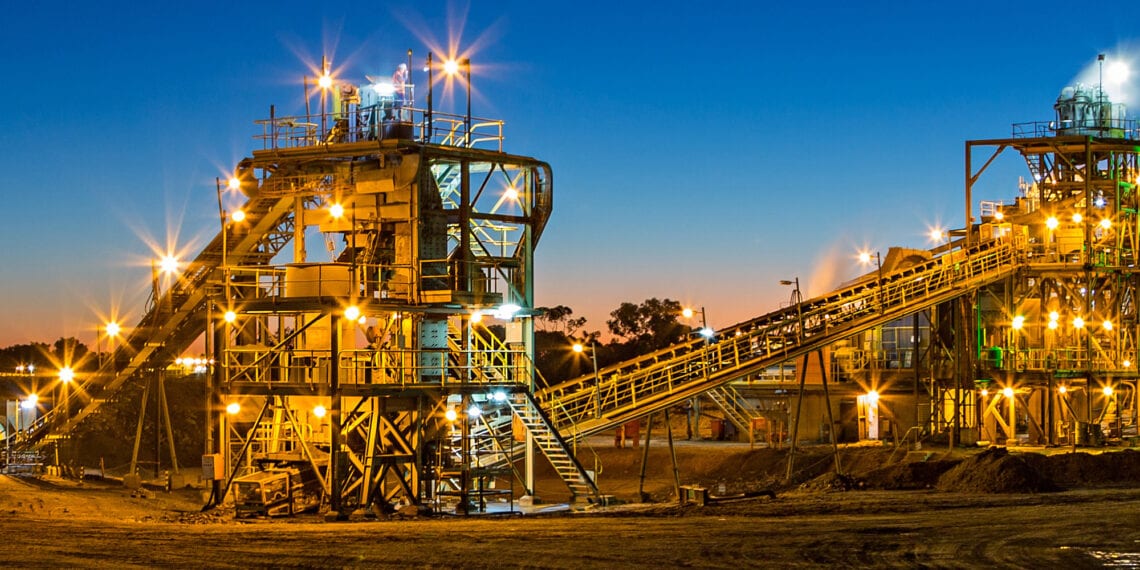According to the Copper Development Association, Copper was first used by man over 10,000 years ago. However, while critical minerals, such as lithium, cobalt, and graphite, have grabbed much of the market attention in the clean energy economy story, it is the ancient mined metal that is seen by many leading analysts as being the most critical element in the next stages of clean energy’s expansion.
Goldman Sachs Research’s Nick Snowdon believes a surge in green capex, combined with the lack of copper mining projects, will lead to a multiyear bull market in copper.
Asked in a recent episode of Goldman Sachs’ Exchanges podcast why he believes that “copper is the new oil” Mr Snowdon agreed that the metal is strategically the most important commodity in the energy complex.
“When you look at the Paris Climate goals and ultimately the path to net zero emissions, that is going to be achieved predominantly via abatement, i.e., via electrification and renewable energy, then copper is going to be the most critical raw material to achieving that goal, because it is the most cost effective conductive metal that is used in capturing, storing and transporting electricity.
“And when you look at the key areas of the green economy, whether it’s electric vehicles, electric vehicle infrastructure, renewables, wind turbines and solar, copper is used in much more intensive volume levels than in the old economy equivalent,” he said. Mr Snowdon also estimated that copper prices will soar from about $10,000 a tonne today to about $15,000 by 2024.
Wood Mackenzie’s senior vice president, vice chair metals and mining, Julian Kettle, is another who believes copper will play a pivotal role in the energy transition.
In a recent article, Mr Kettle said that under their base case scenario, demand for primary copper is set to grow by an average of around 2% per year over the next 20 years. That represents an incremental rise of around 9Mt over the period.
Woodmac’s Accelerated Energy Transition Scenario (AET-2), which limits the average global temperature increase to 2˚C above 1990 levels, boosts copper demand growth to 3.5% per year. This scenario would double global primary demand by 2040, equivalent to an additional 10Mt.
Multiple advantages
So why is Copper so critical? Weight for weight, outside precious metals, copper is the best conductor of electricity and heat.
Copper is used in high, medium, and low-voltage power networks, and copper conductivity is considered to be the standard by which other conductors are measured.
The unique combination of strength, ductility, and resistance to creep and corrosion establishes this non-ferrous metal as the preferred and safest conductor for wiring in buildings. As an essential component of energy efficient motors and transformers, it is used in a multiplicity of applications in manufacturing industries, all forms of transport and the domestic environment.

Because copper is a highly efficient conductor of electricity and heat, it is used in renewable energy systems to generate power from solar, hydro, thermal, and wind energy across the world. Copper helps reduce CO2 emissions and lowers the amount energy needed to produce electricity. In many renewable energy systems, there is twelve times more copper being used than in traditional systems to ensure efficiency.
Copper is one of the best renewable resources. It is one of the few materials that can be recycled 100% over and over again without a loss in performance.
Renewable energy sources provide nearly a quarter of the world’s power, and copper plays an important role in making it as efficient as possible with minimal impact on the environment.
Solar heating
Copper’s combination of high heat conductivity, resistance to atmospheric and aqueous corrosion, ease of fabrication, sealability (joining by soldering), mechanical strength, and longevity offer strong advantages over any other material in solar heating applications.
Wind energy
The primary use of copper in wind energy technologies is in the coil windings in the stator and rotor portions of the generator, in the high-voltage power cable conductors, transformer coils and earthing.
Photovoltaics
Copper forms part of the materials presently used for photovoltaic solar cells, in the technology’s cabling, earthing, inverter, transformers, and photovoltaic cell ribbons.
Is there enough copper to meet growing demand?
While experts are highlighting these benefits in forecasting that copper is in line for major demand growth and a leap in prices, analysts are also expressing concerns about its capacity to keep up with the market’s needs.
Currently, Woodmac estimates the industry has committed around US$120B in capex to expand production to offset the impact of grade decline and depletions.
Nonetheless, it suggests there is concern that without additional substantial investment, production will decline from 2024 onwards. Coupled with demand growth, this decline in output will lead to a theoretical shortfall of around 16Mt by 2040.
Woodmac says that plugging that gap requires an investment of in the region of an additional US$325B, which under its AET-2 scenario leaps to in excess of US$0.5T.
“In short, the copper industry is just not investing enough to meet burgeoning requirements; it’s all well and good governments stimulating the demand side of the equation through policy, and miners talking up the same, but where is the investment in supply?”
Goldman Sach’s view is that the copper market as it currently stands is not prepared for the new demand environment.
“Moreover, a decade of poor returns and ESG concerns have curtailed investment in future supply growth, bringing the market the closest it’s ever been to peak supply. Indeed, we see the copper market sleepwalking to a classic case of the ‘revenge of the old economy’, just as oil did during the 2000s commodity boom,” a recent report from the firm said.
It pointed out that even with copper prices soaring by as much as 80% over the last 12 months, there have been no material greenfield project approvals.
The Goldman Sachs report forecasts that copper could go as high as $15,000 per tonne by 2025.
“We believe that the most probable path for copper price from here – that both avoids depletion risk and as well as a sharp surplus swing – is to trend into the mid-teens by mid-decade,” the report suggested.
“We estimate that green demand will grow at an average annual growth rate of 20% year on year in the 2020s, generating just under 500kt per year of growth in demand volumes.
“Crucially, the copper market as it currently stands is not prepared for this demand environment. The market is already tight as pandemic stimulus (particularly in China) have supported a resurgence in demand, set against stagnant supply conditions.
“Moreover, a decade of poor returns and ESG concerns have curtailed investment in future supply growth, bringing the market the closest it’s ever been to peak supply.”
It will now need to be seen whether the copper developers can move quickly enough to take advantage of this new opportunity, 10,000 years after its discovery.












